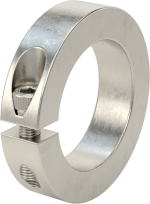This was me a few months back: Stubborn Pool Ladder
I eventually got the ladder removed but it was completely destroyed. The anchors are ok though.
I think what the last person commented is what happened. I tightened the anchor wedge in too tight and it got out of round and wedged in there.
So here we are, I bought a new ladder and I'm in the process of opening the pool. This is year 4 of operating this pool and every time I remove the ladder big chunks of earth come out with it, stuck in the end of the tubes. I'm wondering if this contributed to the old ladder sinking too far, which is why I tightened the anchors.
I'm thinking about putting something down in the holes to act as a support for the pool ladder so the anchor wedges aren't carrying the whole load. I thought about pouring quick crete in it, but that could quickly become a disaster for this rookie. I could just backfill with more dirt but it would likely just come out when I remove the ladder in the fall. Putting some rock in there is what I was thinking. There's this fine rock that I used for a support base when I built a retaining wall. When it gets settled it doesn't move. I was considering this. Or drainage rock that also doesn't shift much.
Also I was thinking about this for the end of the tube. I was hoping to find a cap to prevent dirt from getting in the tube, but this also doubles as strengthening the tube against the anchor wedge. Tool, Pool Tool, Handrail Stabilizing Plug, Carbon Fiber, 1.875"
Thoughts?
TIA
I eventually got the ladder removed but it was completely destroyed. The anchors are ok though.
I think what the last person commented is what happened. I tightened the anchor wedge in too tight and it got out of round and wedged in there.
So here we are, I bought a new ladder and I'm in the process of opening the pool. This is year 4 of operating this pool and every time I remove the ladder big chunks of earth come out with it, stuck in the end of the tubes. I'm wondering if this contributed to the old ladder sinking too far, which is why I tightened the anchors.
I'm thinking about putting something down in the holes to act as a support for the pool ladder so the anchor wedges aren't carrying the whole load. I thought about pouring quick crete in it, but that could quickly become a disaster for this rookie. I could just backfill with more dirt but it would likely just come out when I remove the ladder in the fall. Putting some rock in there is what I was thinking. There's this fine rock that I used for a support base when I built a retaining wall. When it gets settled it doesn't move. I was considering this. Or drainage rock that also doesn't shift much.
Also I was thinking about this for the end of the tube. I was hoping to find a cap to prevent dirt from getting in the tube, but this also doubles as strengthening the tube against the anchor wedge. Tool, Pool Tool, Handrail Stabilizing Plug, Carbon Fiber, 1.875"
Thoughts?
TIA



